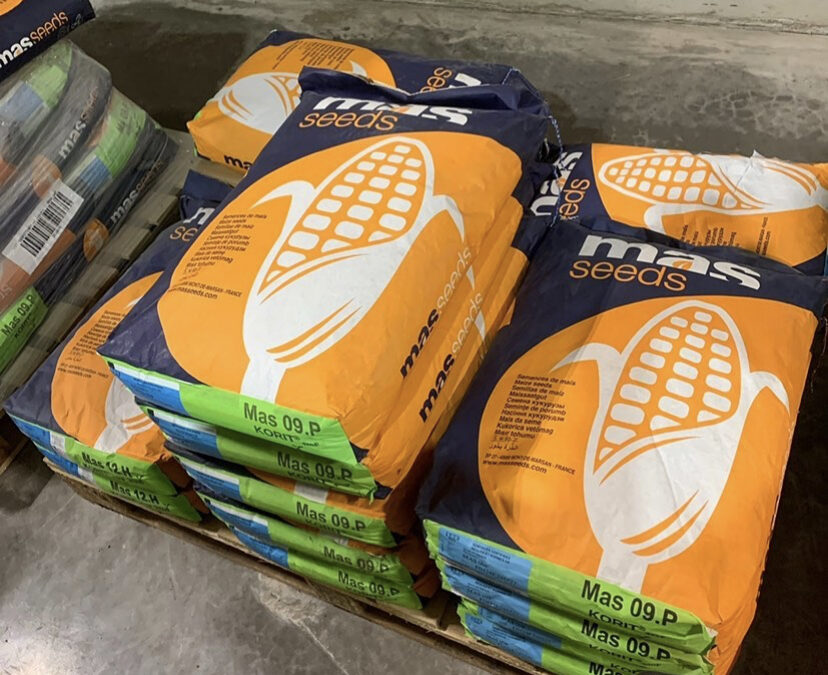It’s the time of year for reviewing past progress – and for planning ahead.
Farmers will be looking to learn from this year’s harvest in order to optimise the next. Did performance match expectation? How did the cold, wet start to 2021 affect drilling plans? Was the choice of site the best possible?
When it comes to variety selection, the choice can seem bewildering – as can the range of factors that may be taken into account. Cost and yield potential are obvious criteria; but what of other considerations such as earliness, starch levels or digestibility?
We grabbed five minutes with one of our agents – forage and crop specialist Richard Leach – to get his thoughts on the year ahead.
What is your role in Bright Maize?
Chiefly that of Sales Agent. I’m based in Dorset and cover the Southwest, going as far up as Gloucestershire and Oxfordshire. I advise customers on the best maize variety to grow on the best site their farm has available.
I’m involved with customer surveys, have some input into blogs and articles, attend open days and take customers on group educational visits to France and the Ukraine. I particularly enjoy face-to-face interactions with customers (social restrictions permitting!).

Richard Leach
Why is Bright Maize well placed to meet the needs of the modern maize grower?
Bright Maize has a large portfolio of varieties, from very early to late maturity, and mostly bought directly from the breeder / grower. We buy well and sell well.
Yield is obviously an important component, but we also look closely at starch and energy levels.
We’ve been drawing customers’ attention to varieties with high stay-green profiles – that’s to say, varieties bred so that their leaves stay green (and thus capable of photosynthesis, building energy and starch) for longer.
These varieties offer a number of advantages: their ability to ‘wait in the field’ gives the farmer more flexibility to harvest at the right stage; they tend to deliver a feed that is rich in starch and relatively digestible; and they can make for better conservation in the clamp (because the leaves are still green, the anaerobic fermentation begins more quickly and gives the silage less time to degrade at the outset).
What do you think will be the main influences on forage maize selection in 2022?
I see the main criteria as earliness, yield and energy / starch content.
Maize breeding has really moved on in recent years and, in the right site, early varieties (FAO 160) can produce decent yields. Farmers shouldn’t be sceptical about what these can deliver.
With ELMS [Environmental land management schemes] fast approaching, there is merit in looking at drilling earlier, harvesting earlier and sowing a cover crop in time to cover what would be bare soil if a later variety had been planted. This will reduce runoff and nutrient leaching as well as reducing some topsoil erosion.
Think about farm and maize field location too. Harvesting and transporting maize in potentially wet conditions through a small village at the end of October can be risky.
What Bright Maize varieties do you expect to do particularly well this year?
MAS 06T – very early maturity, high starch content.
Mary Jane – also very early, in fact one of the earliest you can get.
MAS 09P – recommended for an exceptional starch content.
Madonias – another very early maize, also with a very high starch content.
MAS 16B – particularly recommended for high silage yields; a very good stay-green (see above).
I would expect all these to do very well providing they are sown at the right seed rate and on the right site [click on the variety names for more detailed notes or contact Bright Maize for further guidance].
How do you view the longer-term prospects for forage maize in the UK?
I don’t think the growth in the UK maize area will carry on increasing in the way it has done over the last few years. But I do expect maize to continue as a feature of most high-performance dairy and beef diets, as a break crop and as a cash crop on arable farms.
As the more efficient dairy farms expand cow numbers, and have less of their own ground available, I can see more reliance on neighbouring arable farmers stepping in to grow maize to supply under contract.
What is the most important advice you can give a UK dairy farmer growing forage maize?
I would list a few key points summarising what you want to achieve from your maize crop; think about where it’s going to be grown; and then choose the correct variety to suit your needs.


Trackbacks/Pingbacks